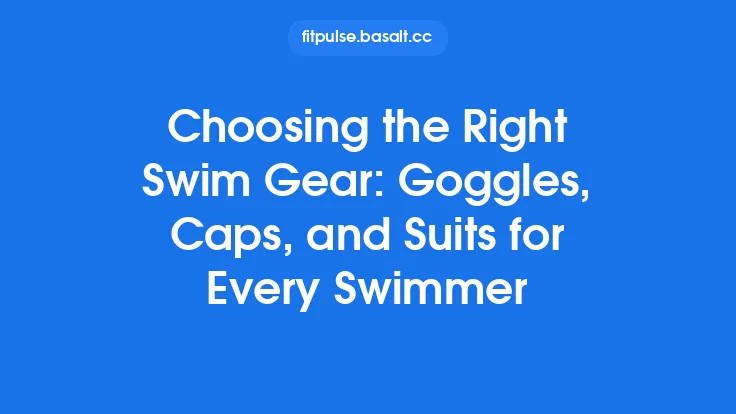When it comes to cardio training, the right footwear and gear can be the difference between a productive session and a frustrating—or even injury‑prone—one. Seasonal changes bring distinct challenges: scorching pavement in midsummer, slick trails after a winter thaw, or icy sidewalks that demand extra traction. By understanding how temperature, humidity, terrain, and personal biomechanics interact, you can build a versatile kit that supports performance year‑round while protecting your joints, muscles, and skin. Below, we break down the key considerations for selecting shoes and complementary gear that keep you moving efficiently, comfortably, and safely through every season.
Understanding the Core Variables
Temperature & Humidity
Heat accelerates sweat production, which can lead to soggy socks, blisters, and a loss of foot stability. Cold, on the other hand, reduces blood flow to the extremities, making feet feel stiff and more susceptible to numbness. Both extremes affect the material properties of shoes—foams become softer in heat and harder in cold—so the construction of the midsole and upper must be matched to the climate.
Terrain & Surface
Urban runners often encounter concrete, asphalt, and occasional cobblestones, while trail enthusiasts face loose gravel, mud, and snow‑packed paths. Each surface demands a specific tread pattern, outsole rubber compound, and level of cushioning. Even within a single season, a cardio routine may shift from a treadmill to a park loop, so versatility is valuable.
Foot Biomechanics
Pronators, supinators, and neutral runners each benefit from different levels of arch support and medial posting. A shoe that corrects overpronation in summer may feel overly restrictive when you add thick winter socks. Understanding your gait helps you choose a platform that can accommodate both the foot’s natural motion and the added layers of seasonal gear.
Personal Preferences & Training Goals
Some athletes prioritize lightweight shoes for speed work, while others need maximal cushioning for long‑duration endurance sessions. The same principle applies to gear: a minimalist jacket may be perfect for a hot‑day interval run, but a wind‑proof, insulated layer becomes essential when temperatures dip below freezing.
Selecting the Ideal Seasonal Running Shoe
1. Midsole Material and Temperature Sensitivity
| Material | Heat Performance | Cold Performance | Typical Use |
|---|---|---|---|
| EVA (Ethylene‑Vinyl Acetate) | Softens quickly, may feel “mushy” on hot pavement | Becomes firmer, potentially less responsive | General purpose, budget-friendly |
| PU (Polyurethane) | Retains shape better in heat, slightly heavier | Maintains cushioning in cold, slower degradation | Long‑distance, high‑mileage |
| Boost‑type (TPU pellets) | Remains springy across a wide temperature range | Slightly stiffer in extreme cold but still responsive | Premium performance, versatile climates |
| Air‑cushion (encapsulated gas) | Consistent feel regardless of temperature | Consistent, though pressure may change minimally with altitude | Racing, speed work |
When you know the typical temperature range of your cardio sessions, choose a midsole that stays within its optimal performance window. For athletes who train both in summer heat and winter chill, a shoe featuring a temperature‑stable compound like Boost or a proprietary TPU blend offers the most consistent ride.
2. Upper Construction and Breathability
- Engineered Mesh – Offers high airflow, quick drying, and lightweight feel. Ideal for hot, humid conditions but may allow cold air to penetrate in winter unless paired with a wind‑proof overlay.
- Knit/Stretch Upper – Provides a sock‑like fit, excellent for moderate climates. Some models incorporate a water‑repellent coating (e.g., DWR) that adds a thin barrier against light rain or snow.
- Synthetic Overlays – Reinforced panels around the toe box and heel improve durability and protect against debris. In colder months, these overlays can act as a windbreak.
- Waterproof Membranes (e.g., Gore‑Tex) – Fully sealed against moisture, keeping feet dry in rain or snow. However, they reduce breathability, so they are best reserved for winter training when sweat management is secondary to protection.
3. Outsole Rubber Compound and Tread Pattern
- Carbon Rubber – Extremely durable, maintains grip on abrasive surfaces like asphalt. Not ideal for icy conditions.
- Blown Rubber – Softer, offers better traction on wet or muddy trails but wears faster on pavement.
- Winter‑Specific Compounds – Formulated to stay pliable in sub‑zero temperatures, preventing the outsole from hardening and losing grip on ice.
Tread geometry also matters: a deeper, multi‑directional lugs pattern excels on loose snow and trail debris, while a smoother, segmented design reduces rolling resistance on roads.
4. Fit Adjustability
Seasonal gear often adds bulk (thick socks, gaiters). Shoes with a roomy toe box, adjustable lacing systems (e.g., BOA, quick‑lace), or removable insoles allow you to accommodate extra layers without compromising foot stability.
Complementary Gear for Seasonal Cardio
Footwear Accessories
- Moisture‑Wicking Socks – Synthetic blends (polyester, nylon) or merino wool keep feet dry in heat and provide natural insulation when cold. Look for seamless toe construction to reduce friction.
- Gaiters – Prevent snow, mud, and debris from entering the shoe. Lightweight, breathable gaiters are suitable for early‑spring thaws, while insulated versions protect against deep snow.
- Orthotic Inserts – Custom or over‑the‑counter inserts can be swapped seasonally. A firmer, supportive insert may be preferable in winter when added sock thickness reduces shoe volume.
Upper‑Body Layers
| Layer | Summer | Winter | Key Features |
|---|---|---|---|
| Base Layer (top) | Light, breathable, anti‑chafing | Thermal, moisture‑wicking, merino | Flat seams, odor control |
| Mid Layer | Optional for early mornings | Fleece or soft‑shell for insulation | Stretch, wind resistance |
| Outer Shell | UV‑protective, ventilated | Waterproof, windproof, breathable (DWR) | Packable, zippered vents |
A modular system—where each layer can be added or removed quickly—lets you adapt to fluctuating temperatures during a single workout (e.g., a warm sunrise run that ends in a cooler afternoon).
Head & Hand Protection
- Sun Visors / Lightweight Caps – Shield eyes from glare and reduce heat buildup on the scalp in summer.
- Thermal Beanies / Headbands – Retain body heat without adding bulk; silicone grips keep them in place during vigorous movement.
- Gloves – Breathable, fingerless gloves for warm weather; insulated, wind‑proof gloves with grip pads for cold conditions.
Visibility & Safety Gear
Seasonal daylight changes affect visibility. Reflective strips, LED‑embedded shoes, or clip‑on lights become essential during early‑morning winter runs when natural light is limited. In summer, high‑visibility colors help you stand out against bright backgrounds.
Building a Seasonal Gear Rotation
- Assess Your Climate Zones
- Mild Zone (10‑20 °C year‑round): One versatile shoe with a breathable mesh upper, moderate cushioning, and a standard rubber outsole. Pair with a lightweight, moisture‑wicking base layer and optional windbreaker.
- Hot Zone (≥25 °C summer, mild winter): Two shoes—one ultra‑light, highly ventilated model for summer; a slightly more insulated version for cooler evenings. Use breathable, quick‑dry socks and a UV‑protective cap.
- Cold Zone (≤0 °C winter, warm summer): Four‑piece system—summer shoe with mesh upper, winter shoe with waterproof membrane and winter rubber; plus interchangeable insoles and gaiters. Layered clothing system with thermal base, fleece mid, and waterproof shell.
- Create a “Gear Calendar”
- Mark the first week of each month with the expected average temperature. Assign the appropriate shoe and clothing combo. This visual cue helps you avoid last‑minute scrambling for gear.
- Test and Refine
- Conduct a short “gear trial” at the start of each season. Run a 5‑km session in the intended setup, noting any hotspots, slipping, or discomfort. Adjust sock thickness, lacing technique, or layer placement accordingly.
- Maintain and Rotate
- Shoes lose cushioning after roughly 300‑500 km. Rotate between two pairs to extend lifespan and allow each pair to fully dry between uses. Store winter shoes in a cool, dry place to prevent the outsole from hardening.
Technical Tips for Maximizing Performance
- Temperature‑Adjusted Lacing – In hot weather, use a “heel‑lock” or “runner’s loop” to prevent heel slippage caused by swelling. In cold weather, a looser lacing pattern can accommodate thicker socks without creating pressure points.
- Midsole Compression Testing – Press the midsole with your thumb; a healthy shoe should give slightly but return to shape quickly. If it feels overly soft (summer) or rock‑hard (winter), consider a different compound.
- Outsole Flex Test – Bend the shoe at the forefoot. The flex point should align with the ball of your foot. Excessive stiffness can hinder natural stride, especially when wearing bulkier winter socks.
- Sock‑Shoe Compatibility – Pair high‑cushion shoes with thin, performance socks for speed work; match maximal‑cushion shoes with thicker, insulating socks for long, cold‑weather runs.
Frequently Overlooked Details
- Foot Hygiene – Seasonal changes can alter the microbiome of your feet. Use an antimicrobial foot powder in summer to combat odor, and a moisturizing cream in winter to prevent cracking.
- Heel Counter Stiffness – A firm heel counter stabilizes the foot during icy conditions, reducing the risk of lateral slips. In hot climates, a more flexible counter improves ventilation.
- Insole Breathability – Some orthotics trap heat. Look for perforated or gel‑infused insoles that promote airflow, especially when paired with thick winter socks.
- Shoe Storage – Avoid storing shoes in direct sunlight (degrades foam) or in damp basements (promotes mold). Use a breathable shoe bag and a silica‑gel pack for winter shoes.
Putting It All Together: A Sample Seasonal Kit
| Item | Summer Version | Winter Version |
|---|---|---|
| Running Shoe | Mesh upper, Boost midsole, carbon rubber outsole | Waterproof Gore‑Tex upper, PU midsole, winter rubber outsole |
| Socks | 3‑mm synthetic, seamless toe | 6‑mm merino wool blend, reinforced heel |
| Base Layer | Light, anti‑chafe, UV‑protective | Thermal merino, moisture‑wicking |
| Mid Layer | Optional breathable zip‑up | Fleece pullover with zip vents |
| Outer Shell | Packable windbreaker | Waterproof, breathable shell with pit zips |
| Headwear | Wide‑brim sun hat | Thermal beanie with silicone grip |
| Gloves | Fingerless, breathable | Insulated, windproof gloves with grip pads |
| Accessories | Reflective armband, clip‑on LED | Reflective vest, LED shoe clips, gaiters |
By swapping each component according to the climate, you maintain optimal foot mechanics, temperature regulation, and overall comfort—key ingredients for sustained cardio performance.
Final Thoughts
Choosing the right footwear and gear for seasonal cardio isn’t about buying the most expensive equipment; it’s about aligning the physical properties of your shoes and apparel with the environmental demands you’ll face. Understanding how temperature, humidity, terrain, and personal biomechanics interact empowers you to make informed decisions that enhance efficiency, reduce injury risk, and keep you motivated throughout the year. With a well‑planned rotation of shoes, adaptable clothing layers, and thoughtful accessories, you’ll be ready to tackle any cardio challenge—whether you’re pounding a sun‑baked boardwalk in July or conquering a snow‑covered park loop in January. Stay aware, stay prepared, and let your gear work for you, not against you.





